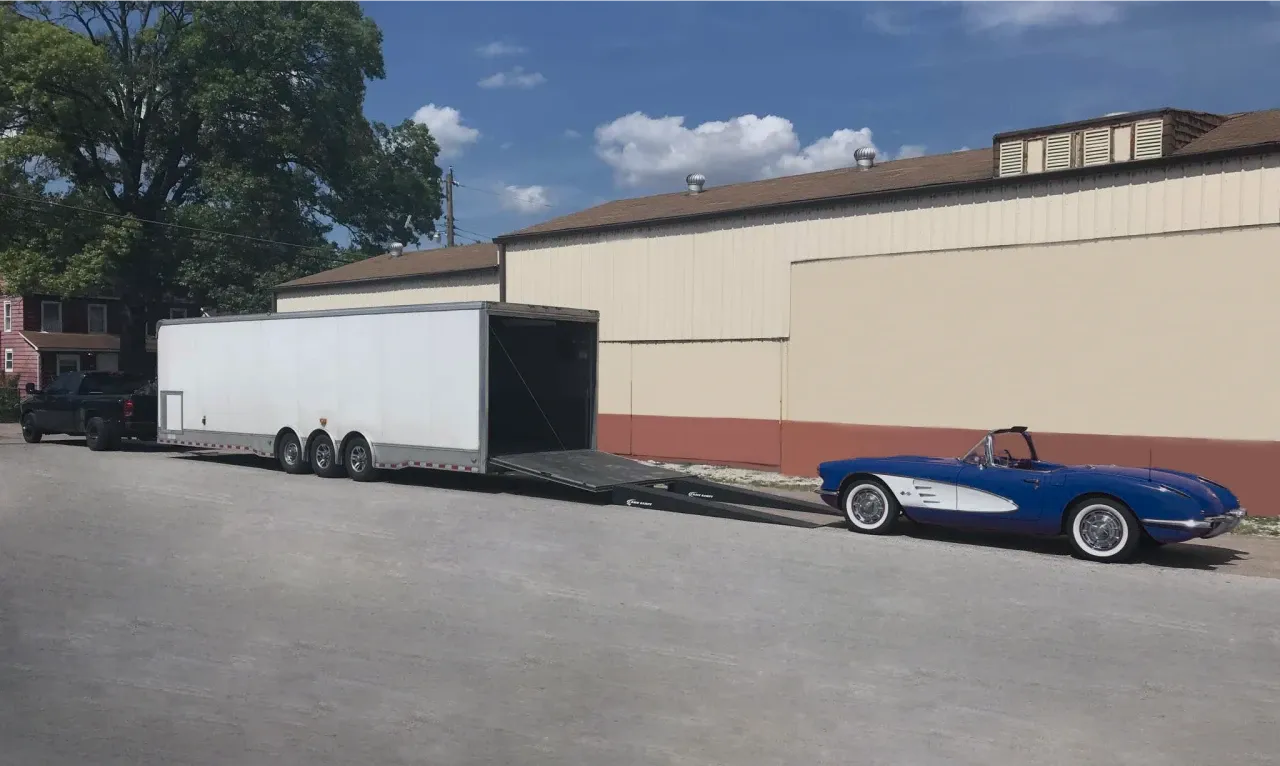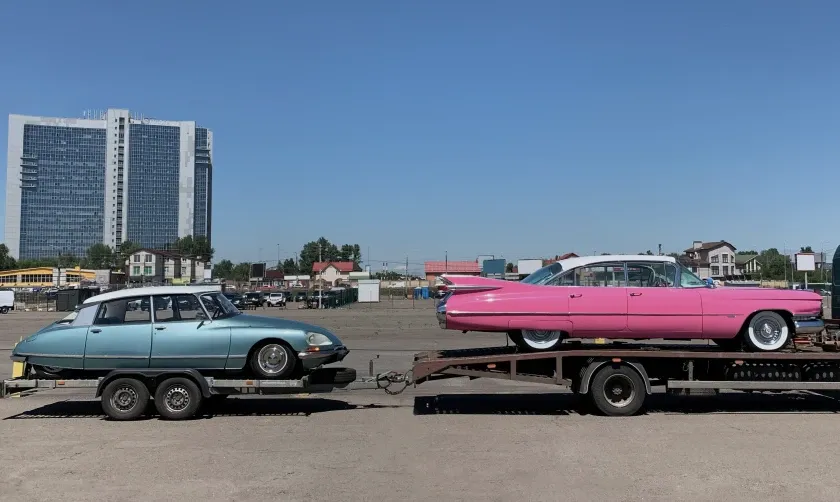Safely Transporting a Non-Operational Vintage Vehicle: A Short Step-by-Step Guide

Careful preparation is required to protect the safety and maintenance of non-operational vintage cars. These historic autos, which are frequently precious and fragile, require special care during transportation to avoid damage or degradation. Proper planning and execution are essential for antique automobile lovers and collectors alike to have a successful and stress-free transportation experience.
Careful preparation is required to protect the safety and maintenance of non-operational vintage cars. These historic autos, which are frequently precious and fragile, require special care during transportation to avoid damage or degradation. Proper planning and execution are essential for antique automobile lovers and collectors alike to have a successful and stress-free transportation experience.
NATIONWIDE CAR HAULING WITH CAROLINA LOGISTICS LLC
Assessing and Planning
It is critical to thoroughly inspect the condition of a vintage vehicle before transferring it, especially when it is non-operational. Inspect the exterior, interior, and mechanical elements thoroughly to detect any existing damage or vulnerabilities. Take note of any fragile parts, loose fittings, or leaks that may necessitate extra care during shipping. This assessment will aid in determining the essential measures and informing the transportation process.
Choosing a Reliable Transportation Method
Investigate the many modes of transportation available for non-operational historic automobiles and select the one that best meets your vehicle’s requirements. Among the most common approaches are:
- Flatbed Trailers. Flatbed trailers provide a safe platform for vehicle transportation. They are great for non-operational antique automobiles since they reduce the requirement for the vehicle to be driven onto a trailer, reducing the risk of further damage.
- Enclosed Trailers. Enclosed trailers protect against the elements, such as rain, dust, and debris. They give an extra level of security, especially for rare or delicate vintage vehicles.
- Towing Services. If the vintage vehicle cannot be placed onto a trailer, it is best to use a professional towing company specializing in non-operational vehicles. They will have the appropriate equipment and knowledge to manage the shipment safely.
You can guarantee the worry-free transportation of your non-operational vintage vehicle by carefully examining the vehicle’s condition and picking a dependable transportation method and provider. Proper planning in these areas will help create a seamless and successful moving experience while preserving the integrity and worth of your prized auto.
Preparing the Vehicle
You may reduce the danger of damage and provide a safe transit experience for your vintage car by securing loose parts, removing accessories, disabling the vehicle, and covering its exterior. These procedures help maintain the vehicle in good condition and preserve its value during shipping.

Securing Loose Parts and Removing Excess Accessories
Inspect the vehicle thoroughly and note any parts or accessories that might get loose during the transfer. Examples of these are mirrors, badges, antennae, and removable interior components. Secure or remove these parts to avoid breakage or damage to the vehicle during transportation.
Also, consider removing any non-permanent aftermarket accessories or add-ons from the car. It comprises spoilers, roof racks, and decorative ornaments. Removing these accessories lowers the danger of damage while ensuring a more streamlined and secure transit process.
Disabling the Vehicle and Protecting the Exterior
Since the car is not operational at the moment, it is critical to properly deactivate it to avoid any accidents or damage during transit. Remove the battery from the vehicle and disconnect it. If there are any fluids in the car, such as petrol, oil, or coolant, empty them completely. This decreases the possibility of leaks or spills during transit, reducing the possibility of harm to the vehicle or other cargo. Release any pressure in the vehicle’s hydraulic or pneumatic system to minimize any unexpected movement or damage during transit.
As for the exterior, thoroughly clean it by removing dirt, debris, or contaminants that may cause scratching or damage during transit. For an extra level of protection, you can use a protective covering and soft padding.
Loading and Unloading
You can ensure a safe and smooth loading and unloading process for your precious vehicle by successfully communicating with the transporter, using adequate loading equipment, and properly securing the vehicle.
Communicate With the Transporter
Always communicate directly and honestly with the transportation company about loading and unloading your vehicle. Share any pertinent information about the vehicle’s condition, particular handling needs, and any particular requests or concerns you may have. This guarantees that the transporter is aware and can make the required arrangements.

Use Proper Loading Equipment
Loading non-operational historic automobiles necessitates the use of the proper equipment to ensure a safe and damage-free process. The following tools can be used:
- Hydraulic Liftgate. If you’re going to use a trailer or truck, be sure it has a hydraulic liftgate. This enables more controlled and smooth loading and unloading, reducing the possibility of accidental drops or damage.
- Loading Ramps. Use solid loading ramps that can manage the weight and dimensions of the historic automobile while loading it into a trailer or flatbed. Ensure the ramps are properly secured to the transporter to avoid movement or instability during loading.
- Winches and Straps. Winches and straps are required to secure the inoperable car during loading. Winches can help draw the vehicle onto the trailer, while belts add stability and prevent shifting or sliding during transport.
Secure the Vehicle on the Transporter
It is critical to properly secure the non-operational historic vehicle on the transporter to avoid damage or accidents during shipment. Using wheel straps or chains, secure the wheels of the historic automobile. To protect the vehicle’s outside surfaces, utilize soft tie-downs or padded straps when securing it. Also, make sure the vintage vehicle’s weight is appropriately distributed on the transporter. It helps maintain balance and stability during transit, lowering the chance of tipping or tilting.
Conclusion
Safely transporting a non-operational vintage automobile requires careful planning, comprehensive preparation, and meticulous execution. Begin by evaluating the vehicle’s condition, investigating dependable transportation options, and picking a respected service provider with experience working with historic automobiles. Secure loose parts, remove accessories, disable the car, and protect its exterior before transfer. Maintain clear communication with the transporter while loading and unloading, use suitable loading equipment, and securely fasten the car to the transporter. Prioritize the maintenance and conservation of the vintage automobile throughout the process to preserve its historical and sentimental value.
If you are looking for a reliable car hauling service for your precious auto, Carolina Logistics is ready to provide top-notch service for you. Our car hauling department can guarantee safe and stress-free transportation for your car. Give us a call to learn more details.
